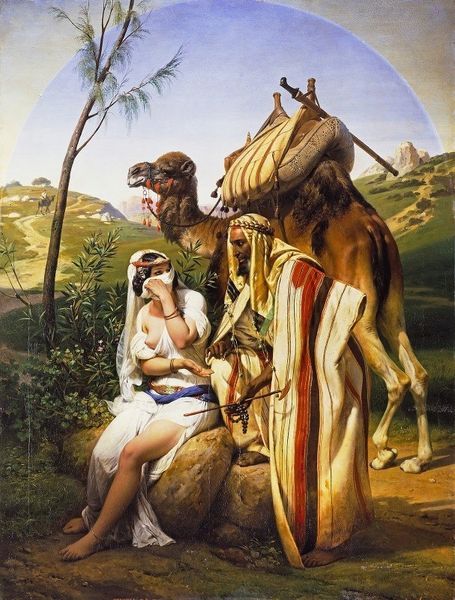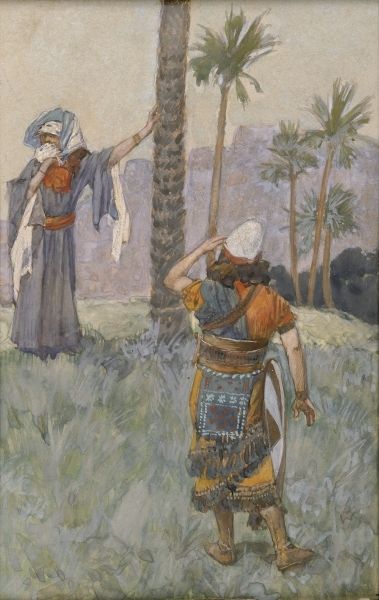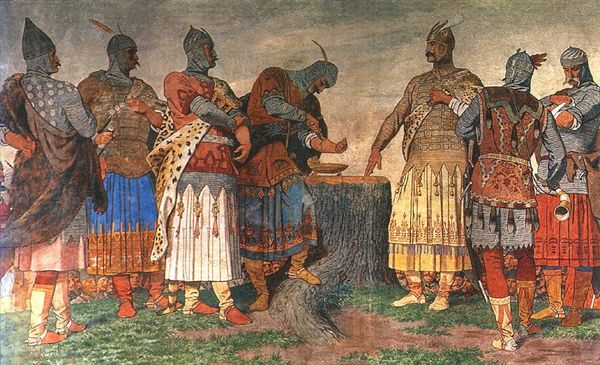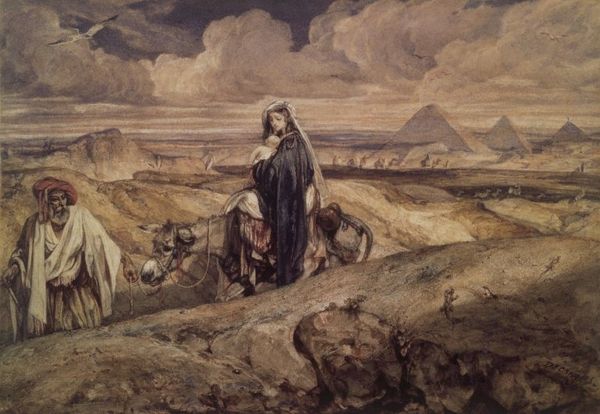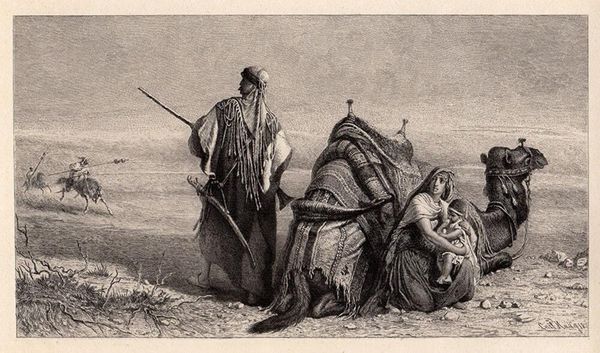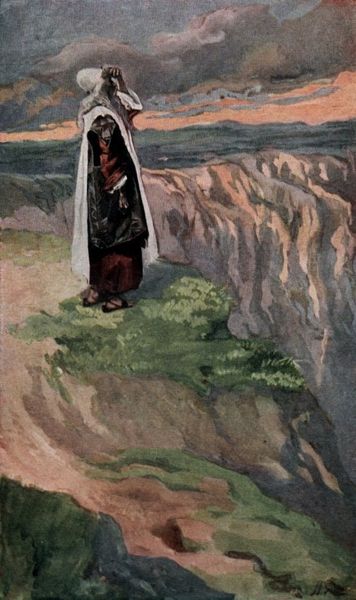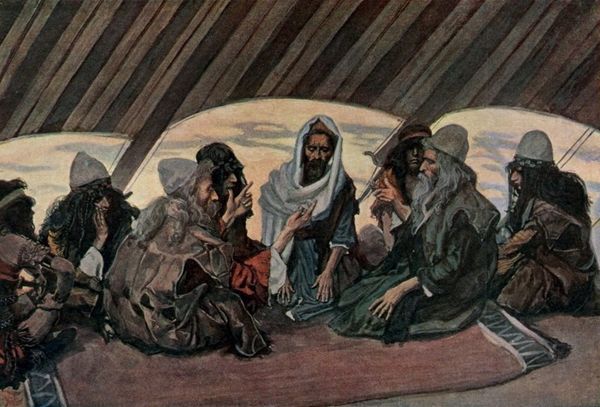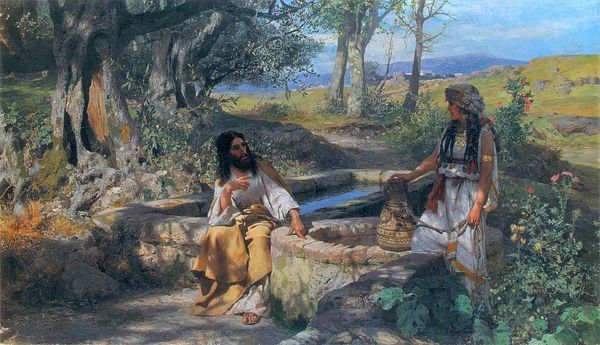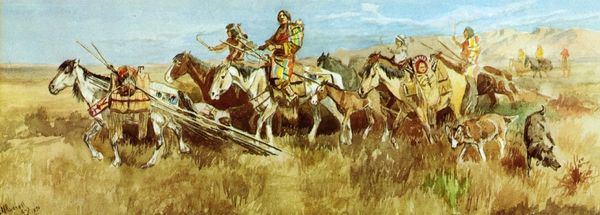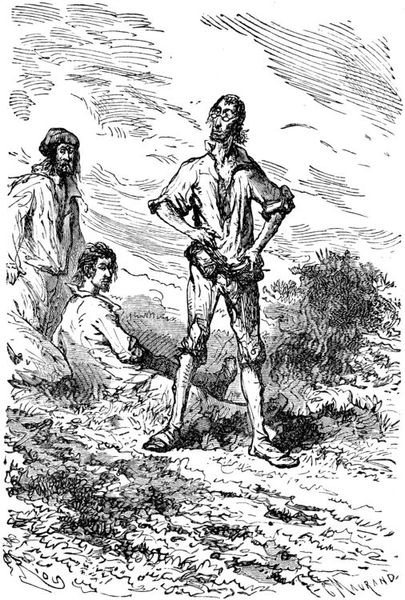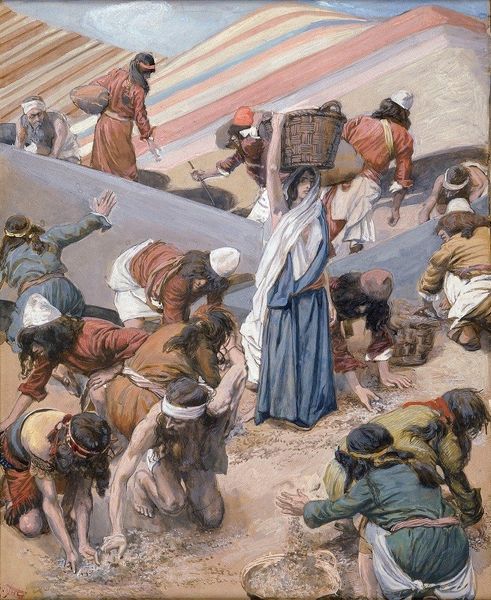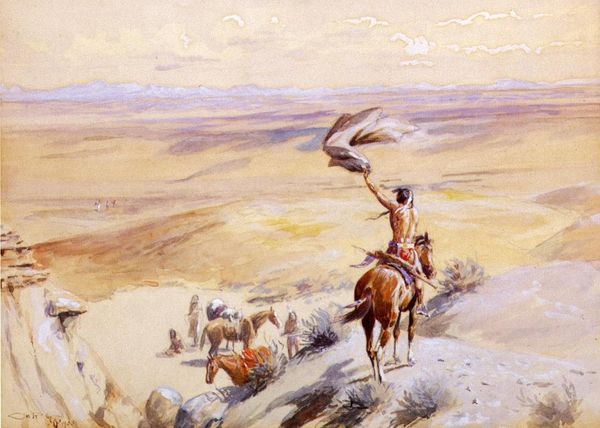
watercolor
#
portrait
#
landscape
#
figuration
#
watercolor
#
coloured pencil
#
history-painting
#
academic-art
#
watercolor
Copyright: Public domain
Curator: James Tissot presents us with "Moses on the Mountain During the Battle, as in Exodus," executed in watercolor. Tissot, a name deeply intertwined with depicting social life, here offers a perspective rooted in biblical narrative. What strikes you immediately? Editor: The composition immediately draws me in—three figures dominate the foreground against a sprawling landscape. There's an almost theatrical staging, the lighting lending the figures considerable depth, but something in the positioning feels stiff, almost contrived. What draws me in? Curator: That stiff theatricality might stem from the period's conventions, which framed biblical subjects as grand history paintings. Note how Tissot deliberately echoes academic art traditions, lending religious narratives increased social authority. This representation aligns with the late 19th-century quest for moral guidance, and also it reminds of the artist's own religious conversion. Editor: True. Visually, however, it’s all about contrasts—the crisp detail in the figures against the almost hazy mountains, the starkly rendered draping over the support contrasting with the aged character. But is it about divine power? I do feel the story does more for what faith meant to those nearby—a physical burden, rendered visibly, moment by moment. The painting does feel grounded in the actual work of support, as the success of Israel rested upon the maintenance of the vigil. Curator: That struggle of support speaks to the institutional underpinnings of religious authority. The figures propping Moses up underscore the community’s role in sustaining spiritual leadership—leadership in the material sense that the success in battle relied directly upon the sustained upright position of the seer's hands. Editor: I see how your approach enhances my formal reading— the human-scale drama embedded inside larger sociopolitical dimensions. This makes the artistic treatment feel both individual and more significant in a context like this. Curator: Exactly. The intersection reveals the art historical complexity in which aesthetic choices have material consequences far beyond the pictorial. Editor: A great encounter, thanks. Curator: Indeed. Thanks.
Comments
No comments
Be the first to comment and join the conversation on the ultimate creative platform.
